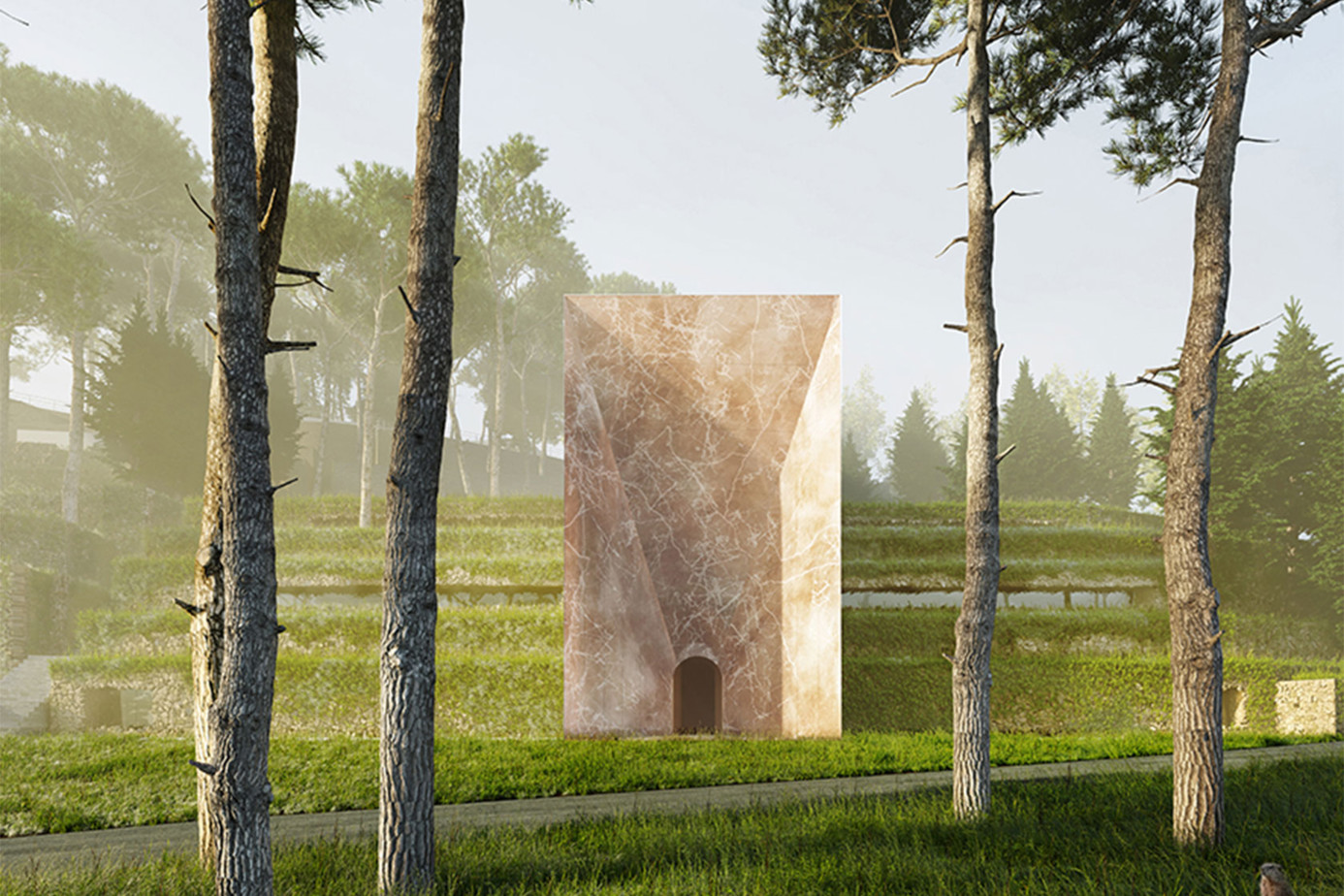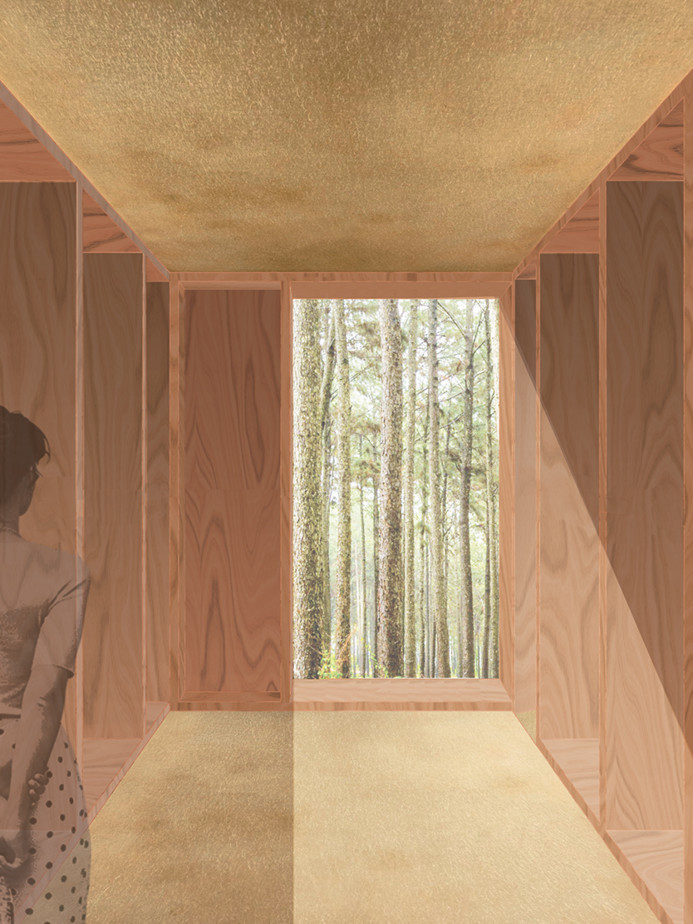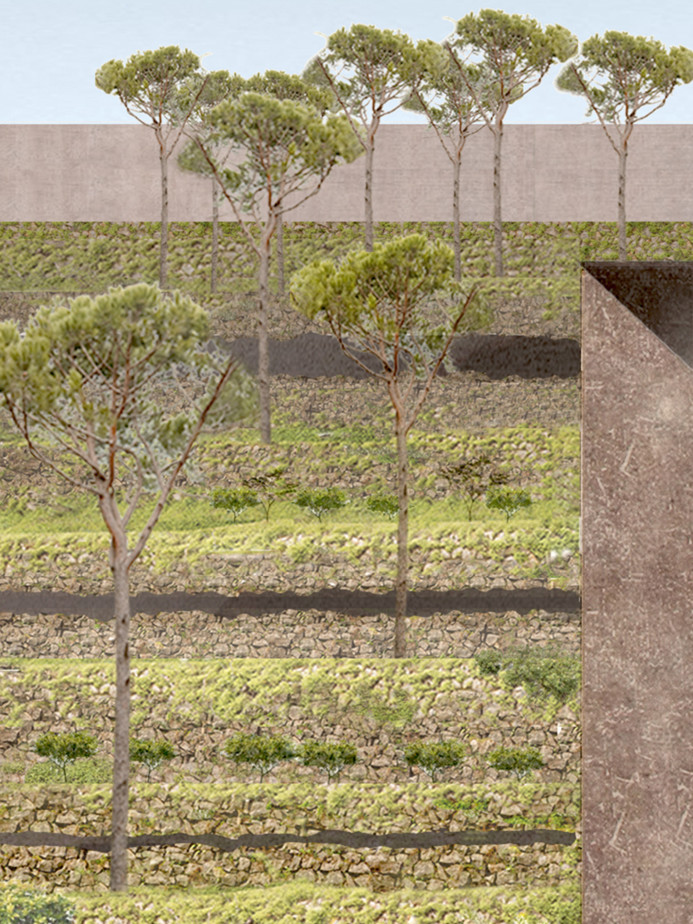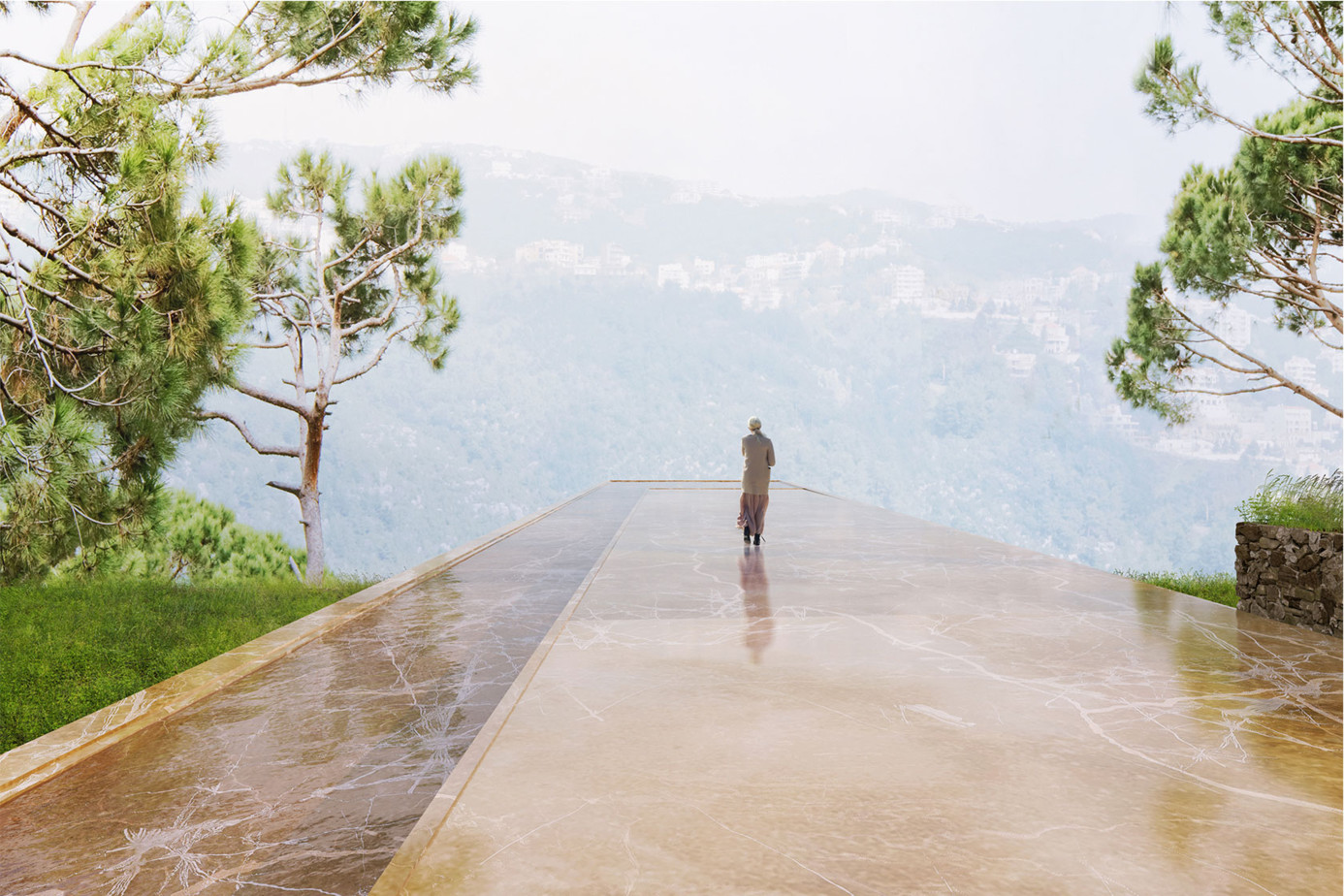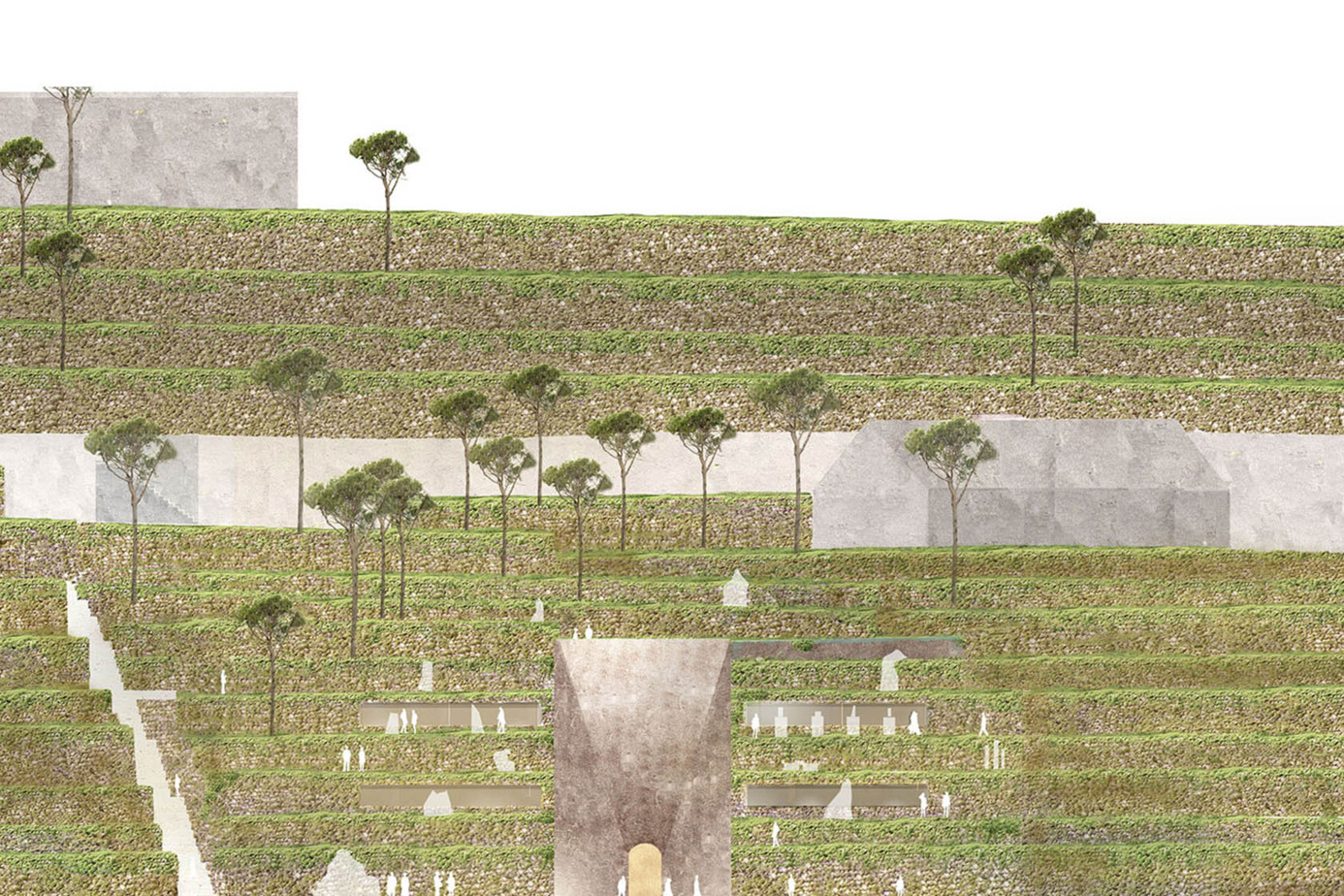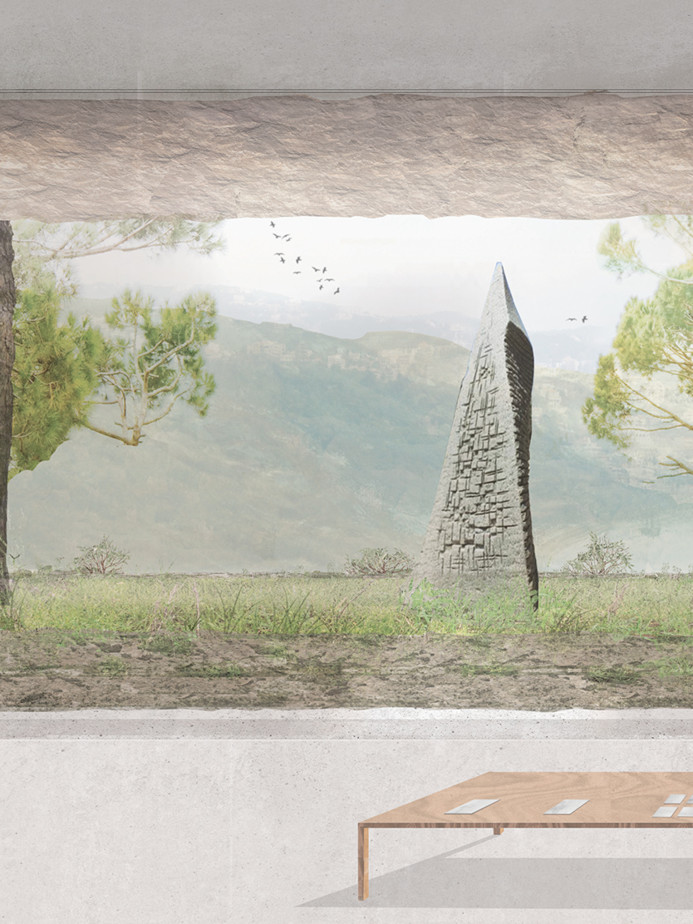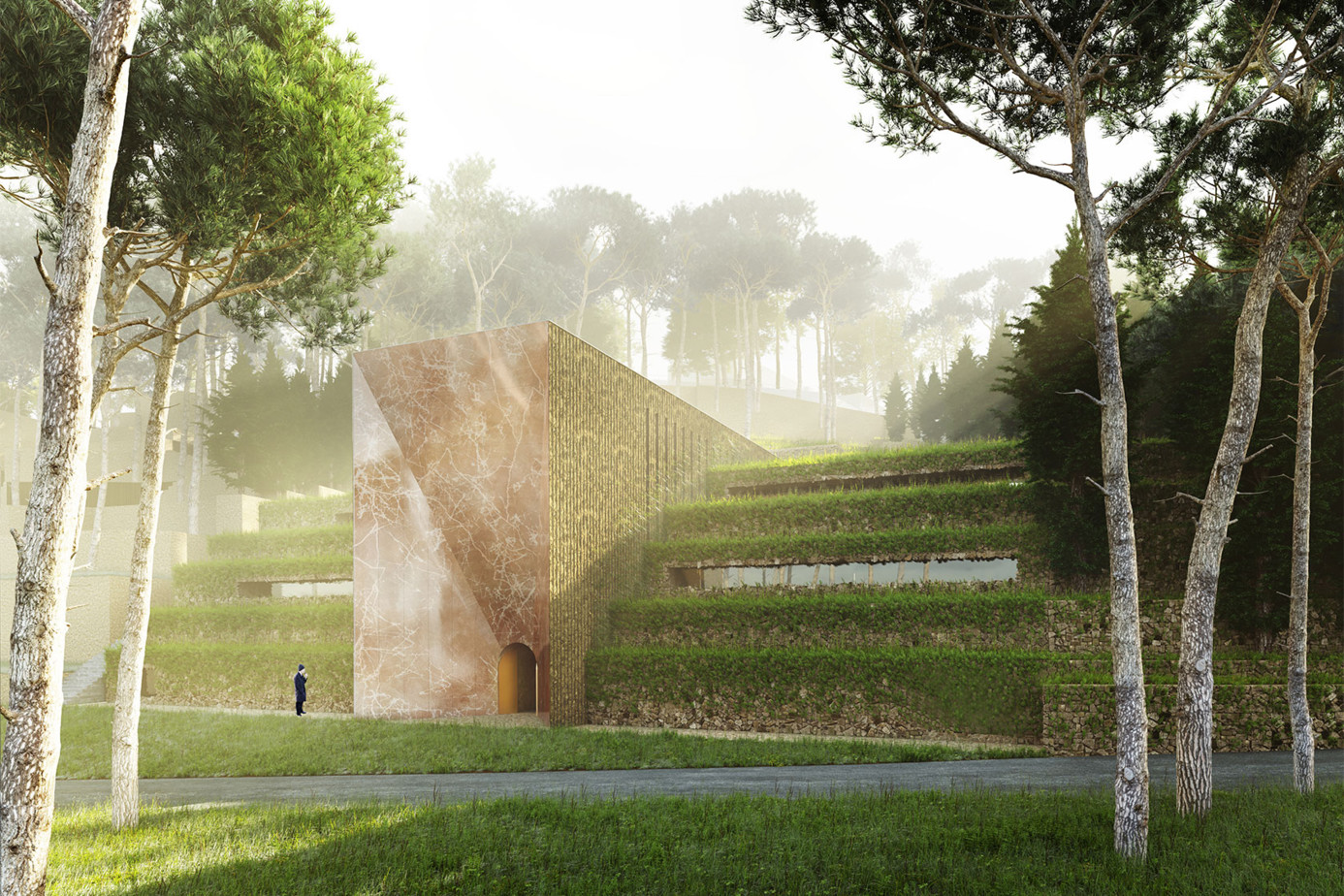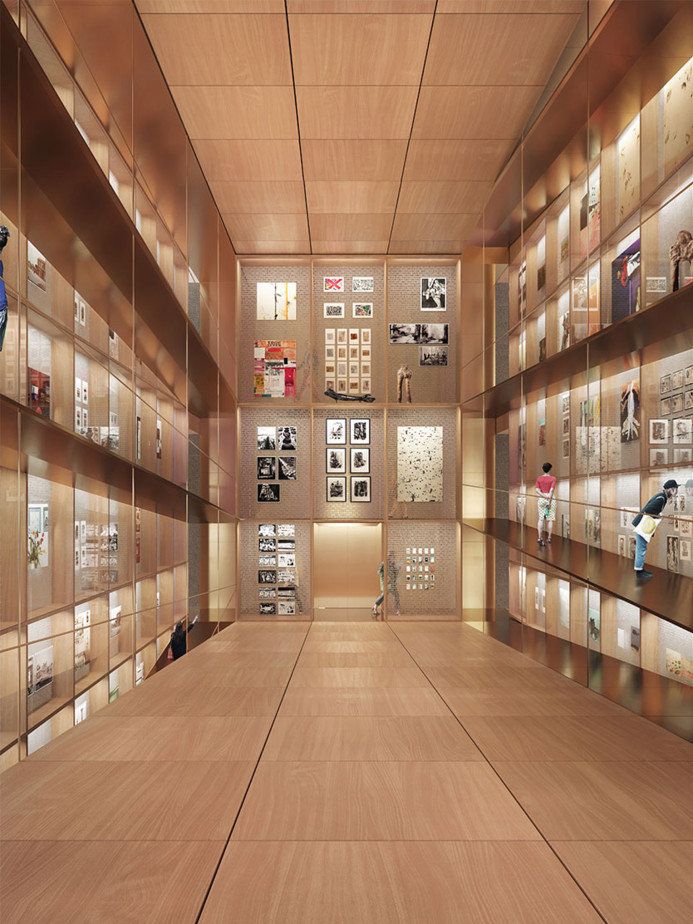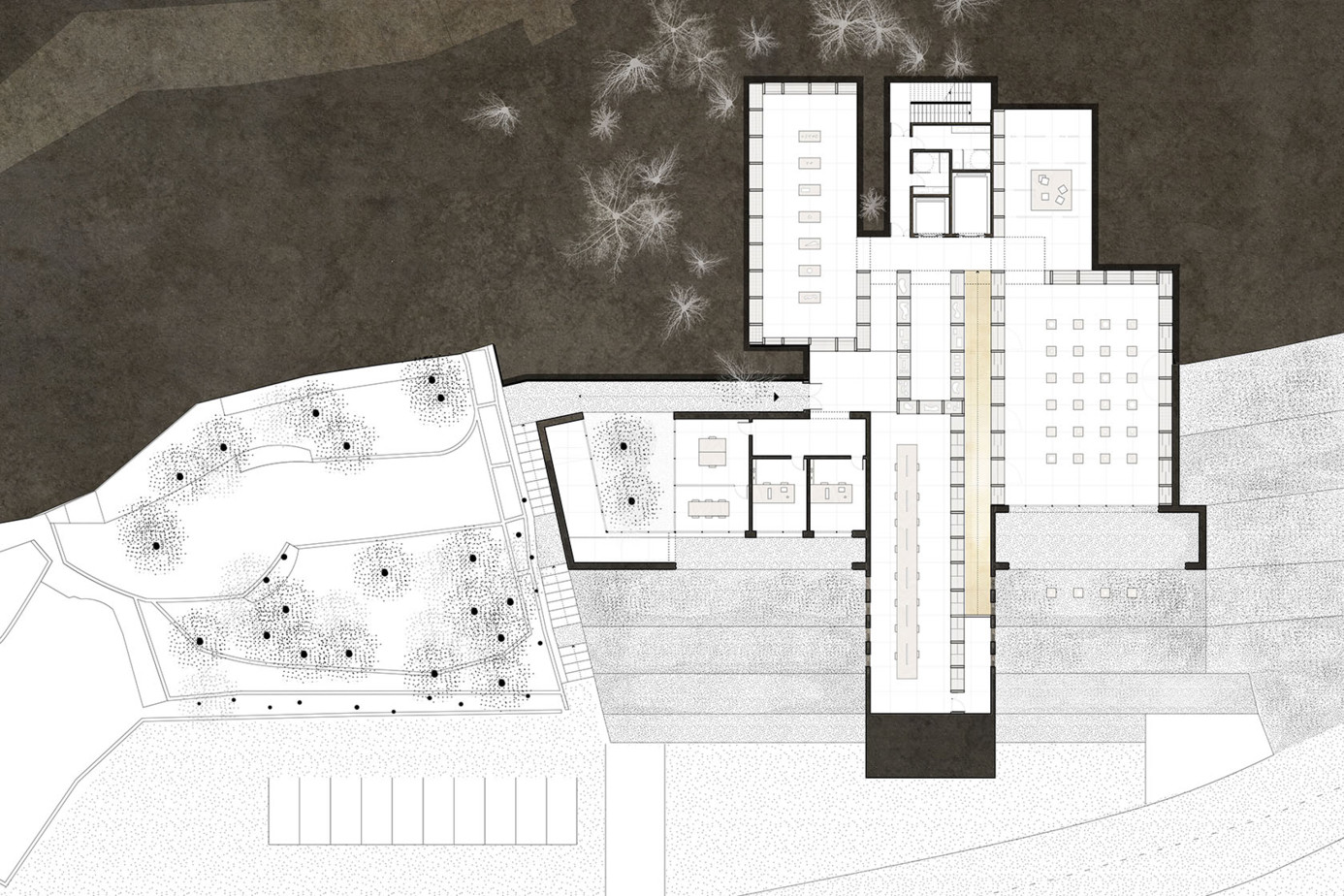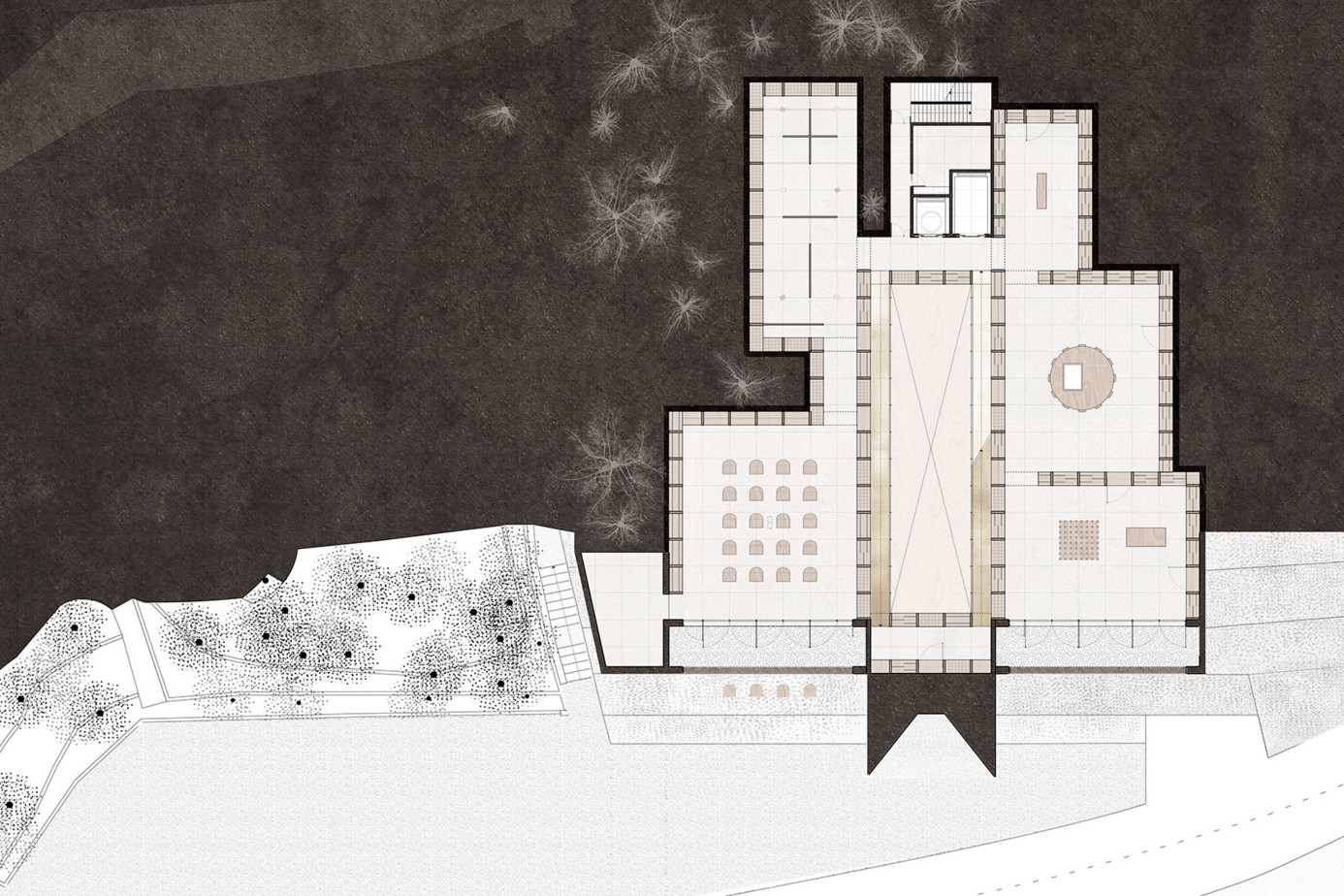Saradar Collection
An emergence, an opening, an archaeology. A heart telling the story of its land, whispering the stories of the Levant as they are drawn in pen, in colours, in paint, in the immaterial world of emotions and of the Arts. Saradar Collection’s Open Storage emerges discreetly from the site, a being awakening. Its sides are worn with earth, its back is an open wet ground, its sleeping wings are folded tightly under a bed of greens and in its beating heart, a large library of stories.
Our proposal for this Open Storage can only draw on the beauty of this site. It emerges from the genius loci of the place, its protective spirit. We imagined a presence that discreetly yet monumentally excavates the depth of the earth into which it is set. An architecture that suggests, evokes, elicits, awakens. Like a careful archaeological dig, Saradar’s Open Storages spaces emerge delicately from the depths of the land like a cluster of “cabinets of curiosities and wonder”. Once the visitors cross this portal, they step into a large hall, resembling a library and designed as a tall “cabinet of curiosity and wonder”, set on three levels. The Open Storage enables the collection to be exhibited and stored at the same time, by making the current and future artworks easily accessible. This series of “Wonder Rooms” offers visitors a truly immersive and interactive experience — the exhibition narrative is imagined, created, transformed in their hands as they uncover and discover the works. At the age of dematerialization, when art is exchanged and acquiesced digitally, this project embodies the physical echo of the interactive realm of Arts.
Writing a new story, it is a journey, a retreat, a spiritual and enchanting premise; a slow immersion into the heart and interiority of the green landscape of this site, an absorption of the deep intertwining nature of art. An open platform for exchange and communication in a heightened material space, the Open Storage becomes the place for the “collective”, a place curated by the visitors themselves. It enhances connections and proves that history is built upon subjective collectivity. Its architecture is an invitation for heightening the senses where human experience and connection are fostered and become more than ever essential for the construction of a common future.
[…] [×]